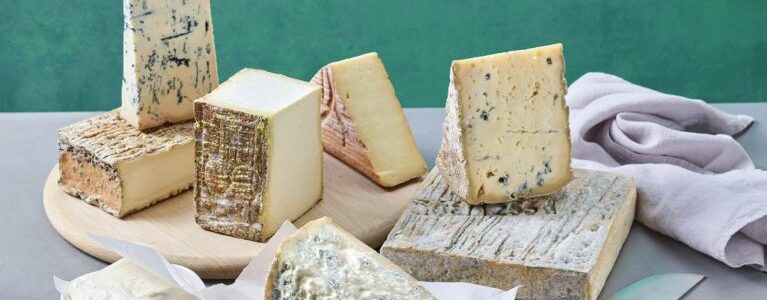The unknown world of food phobias
Massimo, forty years old from Bergamo, at the age of eight experiences a trauma that partially compromises his future relationship with food. He remembers every detail of this moment: he was at a dinner full of relatives in his grandparents' large kitchen in the countryside. There were aunts, uncles and cousins; the adults talked animatedly and the children played around the table. At one point, Massimo accidentally gets stuck between an aunt and a very smelly local plateau de fromages: fresh taleggio, gorgonzola and mountain cheeses. For some time he could not bear the sight or smell of it and it was like locking a claustrophobic in a coffin. So he begins to sweat cold, with palpitations and an uncomfortable sense of nausea, until his uncle removes him from the cheese table, and takes him to get some fresh air in the garden. From that moment until late adolescence, the boy was unable to eat any type of cheese, then slowly reintroduced. To date, Massimo's relationship with cheeses is very peculiar: the idea of thinking them stored in some fridge without the necessary, perhaps obsessive precautions, or in packages that aesthetically disturb him (for example, the black trays of the supermarket) repel him. The emotion is that of disgust, an urgent need to get away from it. That of Massimo and many others who have told me about their experience has the characteristics of a real one phobia directed towards food, instead of a snake, so to speak. In its specific case, the fear of cheese also has a name, it is commonly called turophobia. It can be of different types: there are those who cannot eat it, touch it or even see it.
He is part of a huge family of food phobias, which seem so bizarre and rare due to the stigma we still associate with emotions and behaviors that are socially seen as bizarre. After all, how can we fear something that is essential to both our existence and our sanity? Believe it or not, there is a good chunk of
people out there who are actually terrified of certain foods or scared of the sensations associated with them. Massimo's condition that we have just seen, like many other people, has never been diagnosed – we are therefore talking about hypotheses, based on the presence of a trauma and on the existence of certain symptoms. Living without a certain type of food is possible; but the associated discomfort is never negligible for anyone affected by it.
Giacomo and Ludovico are brothers, sons of my cousin. The former loved everything that was pumpkin based, practically from weaning. At 11, however, one day he can't finish his portion of pumpkin in the oven, so his mother – which is normal for every mother – pushes him to finish it. It happens that a gastrointestinal virus was around in his body: Giacomo vomits his dinner and feels terrible for a few days. Since then, the smell of pumpkin alone has made him feel anxious and upset. Something similar happened to his brother Ludovico, he hasn't been able to eat fruit since one afternoon he struggled to finish a smoothie made by his mother and that he didn't feel like finishing. Even in his case, bad luck would have it that he contracted a virus and the mix of this imposition and the abundant vomiting that followed traumatized him. At the age of 14, Ludovico still cannot touch, chew or swallow any type of fruit. He recently tried with watermelon, but in these cases it was his body that told him not to eat it, somatizing the anxiety.
Filippo, on the other hand, is a taxi driver from Modena, he is 38 years old and has always had an atavistic aversion to olives: "they make me so disgusting that I almost fear them. It is really disgusting, my stomach turns upside down. Then the smell is terrible. " The quality of the olive does not make the difference, even if the more gourmet ones seem to give him more stomach upset, such as kalamata or taggiasca olives. And what about olive oil? "It doesn't bother me, because in the oil the olives are destroyed, annihilated." Filippo does not remember the trauma, because he has never talked about this malaise to a professional, however the castle of meanings and emotions that he associates with this food can give reason to a diagnostic hypothesis of phobia.
The first contact I had with such stories was perhaps with Rosanna, the mother of a friend from Cervia. Rosanna is not a teetotaler, she loves to dine at a restaurant and knows how to recognize a well done dish, yet she lives with a fear that is defined oenophobia: fears wine as many of you fear crowded places. Especially the red one, its smell and color are unbearable for her. The alleged cause? As a child, while keeping her father company in bottling a few bottles of red wine, she got drunk from the alcoholic gases released into the room.
The interview with the expert
In a Western context where food scarcity is no longer an issue, many people reject it. According to nutrition biologist Daniele Segnini, food phobias are becoming more and more widespread, probably due to the many meanings that our species attributes to food. So widespread that when I launched a survey on the topic on my social networks, I thought I would attract the attention of a small niche of people, and instead the response was surprisingly warm. There are those who speak of terror, while others speak of disgust; there are those who have tried over the years to undertake a self-taught path of reintegration of the feared food, there are also those who have succumbed to the dysfunctional behavior of avoidance. In wanting to sort out all these psychological conditions regarding food, I asked for some clarification to Dr. Annalisa Signorelli, psychologist and expert in mindful eating and food sexology.
When it comes to food phobias, which macro-category of disorders are we talking about?
From the DSM-5 diagnostic manual, it appears that all phobias are grouped under anxiety disorders, because anxiety is the emotion that is activated when coming into contact with a specific food or a family of foods. As a result, those affected may have somatic and physical symptoms, such as increased heart and respiratory rates, headache, dizziness, nausea, stomach pain, muscle tension, sweating or feeling cold hands and feet, up to real panic attacks. For these reasons, the person tends to implement dysfunctional behavioral solutions such as avoidance, or, in this specific case, avoiding a meal or not ingesting selected categories of foods. It is easy to imagine that this can have serious consequences on physical health.
![]() Browse the gallery
Browse the galleryWhat are the causes of food phobias?
The causes can be both obvious and easily traceable, such as a negative experience during a meal lived in person – direct – or witnessed – indirect – or have a deeper, unconscious and rooted origin in the person. In addition, other comorbid disorders such as generalized anxiety disorder, panic disorder and / or eating disorders may be present.
Lacanophobia (= fear of vegetables), Xocolatophobia (= fear of chocolate), Arachibutirofobia (= fear of peanut butter), Mycophobia (= fear of mushrooms), Alliumphobia (= fear of garlic). The web is full of names of specific food phobias. Do they really exist, or is it pseudo-scientific language?
With respect to food phobias, as you said by doing a little research, you will find a host of different and certainly little known names. But from a diagnostic manual, they are all names that refer to "specific phobias", the diagnostic criteria are marked fear or anxiety towards foods or family of foods, which act as a stimulus. By coming into contact, even if only with sight, those who are victims of these phobias immediately feel fear and anxiety, activating avoidance. In short, there are many specific names, but the core is always the same: the phobia. The difficulty of living with these phobias is further uncomfortable because food is in itself essential for survival, therefore the disorder can trigger other pathologies such as malnutrition, as a result of generalization.
How to distinguish a real phobia from simple disgust?
Disgust is a feeling of aversion or repugnance that may be accompanied by physical sensations (for example, nausea). The phobia instead is characterized by the presence of fear and anxiety, anguish with avoidance of the phobic stimulus. Another difference is that disgust is a single emotion (which can be "also" present in a phobia), instead the phobia is essentially characterized by a series of negative emotions, with precise reactions concerning thoughts, emotions and behaviors.
On TikTok I have found a number of users who cannot emotionally manage the fact that different foods come into contact in the same dish, I have seen that it is called Brumotactillofobia. Is this a phobia too?
Beyond the name, it could be a phobic trait, as well as it could be connected to forms of autism or obsessive compulsive characteristics; if there is no intense fear and adverse reactions to anxiety, it is difficult to trace it back to a real food phobia. In any case, without having more detailed information, a diagnosis or diagnostic framework would be risky.
Of one thing I am sure: the topic of food phobias is highly unexplored and confused and those who suffer from it think they can live with this condition and do nothing to solve it with the help of a therapist. But mental health is no joke, because what may seem like an insignificant phobia, if neglected, can become severe and have even worse side consequences. Especially after the pandemic lockdowns, which put a large part of the mental population to the test, the discourse on mental health has begun to be less and less a taboo and more and more a theme present in social networks, especially among the young people of Generation Z. It is not It is possible to love all foods, disgust is an acceptable emotion, but fear is limiting in itself: let's take advantage of it and talk more about it, ask a professional to help us identify causes and remedies, to live peacefully our relationship with food.

